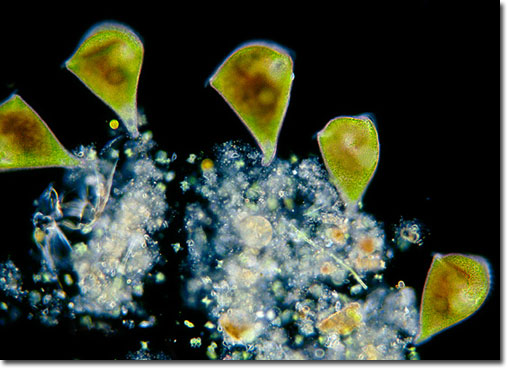|
Stentors are sometimes alternatively referred to as trumpet animalcules due to their commonly observed, sessile shape. However, when these organisms are in motion they transform into a less familiar pear or oval-shaped form, locomoting with the help of numerous hairlike cilia. As soon as a suitable substrate or feeding location is encountered, the individuals settle down and resume their prior appearance. In this form, vibrating cilia lining the rim of the trumpet create water currents that draw food particles into the gullet. Stentors will not, however, eat just anything that passes their way. These discerning protozoa are selective feeders, consuming ciliates in preference to algae and other organisms, and doing so with increasing discrimination as their hunger diminishes.
|
